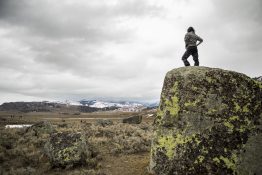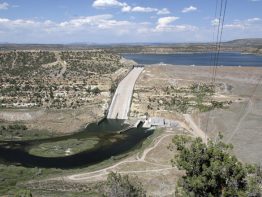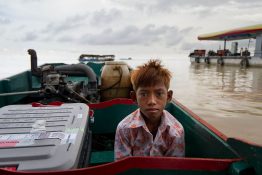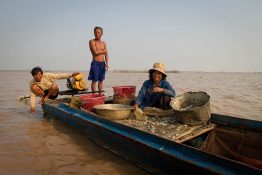Each year, the Seattle Aquarium recognizes individuals who are leaders in marine research, especially in the Pacific Northwest. This year that honor goes to Megan Dethier, a longtime researcher at the College of the Environment’s Friday Harbor Laboratories. She was recognized alongside George Willoughby from Friday Habor Labs’ Advancement Board, who received the Scott S. Patrick Award for his volunteer service.
Read more »A week in the wild at Yellowstone National Park
Students and professors from the College of the Environment make a classroom out of one of the world’s most closely monitored ecosystems: Yellowstone National Park.
Read more »Fish to benefit if large dams adopt new operating approach
Thousands of dams built along U.S. rivers and streams over the last century now provide electricity for homes, store water for agriculture and support recreation for people. But they also have downstream impacts: They reduce the amount and change the timing of flowing water that fish rely on for spawning, feeding and migration. Recognizing that many large dams are here to stay, a UW team is investigating an emerging solution to help achieve freshwater conservation goals by re-envisioning the ways in which water is released by dams.
Read more at UW Today »Interdisciplinary UW project seeks sustainable blueprint for hydropower dams
In Southeast Asia along the Mekong River, the debate is over when and how — not whether — dams will be built. The river and its tributaries support what’s likely the largest inland fishery in the world, worth more than $2 billion annually. Every day, 60 million people or more rely on the Mekong for food and their livelihoods. In the coming years, nearly 100 hydropower dams are slated to be built along the main stem of the river’s 2,700-mile stretch and its connected tributaries.
Read more at UW Today »New research shows hydropower dams can be managed without an all-or-nothing choice between energy and food
Nearly 100 hydropower dams are planned for construction along the tributaries and main stem of the Mekong River’s 2,700-mile stretch. The river, one of the world’s largest, flows through Burma, China, Vietnam, Laos, Thailand and Cambodia. It is an economic engine for fishermen and a food source for millions of people worldwide. While the dams are expected to provide clean energy to the region, if not managed properly they also have the potential to offset natural river patterns, which would damage food production, supply and business.
Read more at UW Today »





